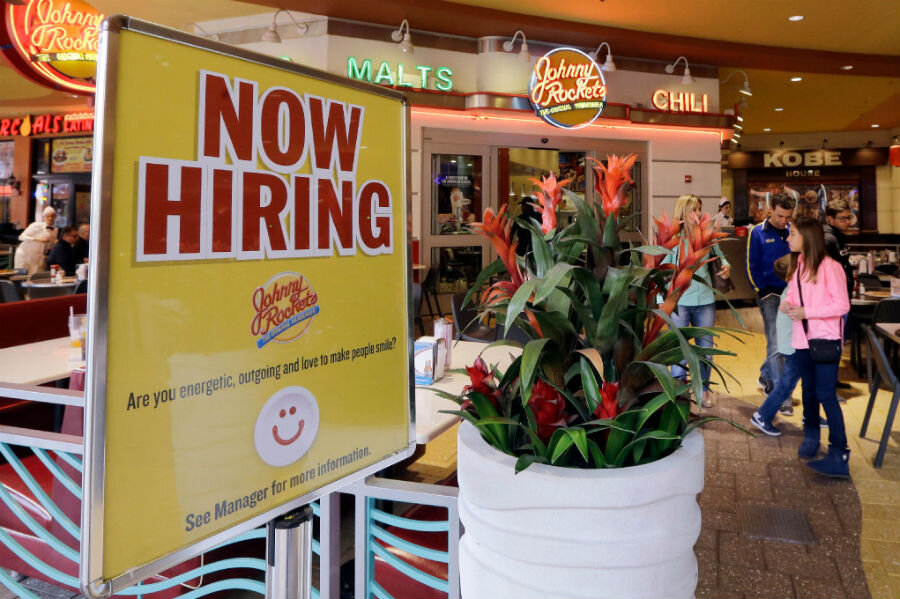Jobless claims decline to lowest level since 1973
Loading...
The number of Americans applying for first-time unemployment benefits dropped to a historic low last week, in another sign of slow but steady growth for the US economy.
The week ending November 12 saw only 235,000 initial jobless claims. The last time claims were that low was in November 1973, over four decades ago.
The low number of claims is good news for the US economy, but there might be more to the story. Many economists point to the fall in claims as part of the rise of the so-called "gig economy" for independent workers, where employment does not necessarily reflect the full-time, steady careers traditionally associated with a strong job market. Also, the good news for the slow-growing economy may not last, due to uncertainty associated with policy changes under Donald Trump and other factors heading into 2017.
According to the US Department of Labor, the latest historic low comes after 89 consecutive weeks of initial claims below 300,000. This constitutes the longest streak of this type since 1970.
The record-setting lows are all the more impressive considering the fact that the US population has increased by over 118 million people since 1970, according to the US Census Bureau.
"While this is good news in general, I also think that it is important not to overreact," writes Todd Knoop, a professor of economics and business at Cornell College, in an email to The Christian Science Monitor. "The fact of the matter is that there is a lot of volatility in these numbers month-to-month. But it clearly seems as if the US economy is getting close to its full employment level."
While the economy has been growing throughout 2016, that growth has not been rapid. Companies actually slowed hiring compared to last year, though they maintained enough forward momentum to shrink the unemployment rate to 4.9 percent. The first half of the year saw growth of a mere 1.1 percent, though it did pick up to 2.9 percent during the July-September quarter.
While the low jobless claims are certainly good news for many Americans, Dr. Knoop points out that much of this growth may be superficial compared to other economic trends.
"There has been quite a bit of job creation – although many of these jobs may be at the lower end of the pay scale," he says.
He adds, "The labor force participation rate remains low – roughly 5% below where it was in 2000. These people who have dropped out of the labor force won’t show up as unemployed or in the jobless claims."
Another sector of the economy not represented by jobless claims are contractors and independent workers participating in the economy on a gig-by-gig basis, who are often underemployed and lacking in benefits. The number of independent workers has jumped in recent years, as Laurent Belsie previously reported for The Christian Science Monitor:
One of the myths surrounding independent workers is that they are mostly Millennials driving for Uber – the so-called gig economy. In fact, older Americans age 55 to 75 are nearly four times more likely to be independent workers than 16- to 24-year-olds are, according to the study by Professors Katz and Krueger. And independent workers are twice as likely to use offline means of finding work or customers offline rather than new online platforms.
....
There are ... privations freelancers often endure: no benefits, no company matching of retirement investments.
"While the gig economy offers flexibility, in many senses these workers are underemployed in terms of hours, wages, and benefits relative to what people might be expected to earn in the formal economy," says Knoop. "I think that the rise of the gig economy is one reason to be fairly skeptical many of the seemingly positive numbers we have received recently on the job front."
Some economists disagree about the influence of the gig market, but there is near-universal agreement that the good news should be taken cautiously in light of economic policy changes coming with the Trump administration beginning next year and rate hikes from the Federal Reserve likely to happen next month, according to The New York Times.
But for now, it's good news, Desmond Toohey, an economics professor at the University of Delaware, tells the Monitor via email.
"The low claims, combined with the low unemployment rate, provide evidence that the labor market is relatively strong," Dr. Toohey says. "This is especially true when compared to data over the last few years. The strength will likely continue in the near future, but longer-term projections are less certain."
This article contains material from the Associated Press.








